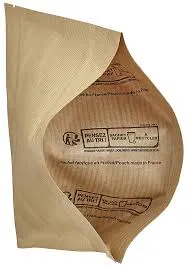Understanding the Conversion Chart from Millimeters to Meters for Accurate Measurements
Understanding the Conversion from Millimeters to Meters A Comprehensive Guide
When dealing with measurements, particularly in fields such as engineering, architecture, or manufacturing, accuracy is paramount. One of the most common conversions that professionals encounter is that from millimeters (mm) to meters (m). This article aims to clarify this conversion, provide a helpful conversion chart, and explain the application of these measurements in real-world scenarios.
The Basics of Metric Measurements
Before diving into the conversion, it's essential to understand the metric system's structure. The metric system is based on units of ten, which makes it easier to convert between different units. In this system
- 1 meter (m) is equal to 1,000 millimeters (mm). - 1 mm = 0.001 m.
This straightforward relationship is key to converting measurements. For instance, if you have a measurement in millimeters and need it in meters, divide the number of millimeters by 1,000. Conversely, to convert meters to millimeters, you simply multiply the meter value by 1,000.
Conversion Chart Millimeters to Meters
To make it easier for anyone needing to convert between millimeters and meters, here’s a simple conversion chart for reference
| Millimeters (mm) | Meters (m) | |-------------------|-------------| | 1 mm | 0.001 m | | 10 mm | 0.01 m | | 50 mm | 0.05 m | | 100 mm | 0.1 m | | 200 mm | 0.2 m | | 500 mm | 0.5 m | | 1,000 mm | 1 m | | 2,000 mm | 2 m | | 3,000 mm | 3 m | | 5,000 mm | 5 m |
conversion chart mm to m

This chart provides a quick reference for converting common mm values to their equivalent in meters, streamlining the process for designers, builders, and engineers.
Practical Applications
Understanding how to convert between these two units has practical applications in various fields
1. Manufacturing In manufacturing, precise measurements are critical. Parts are often designed in millimeters due to their small scale. However, when considering how they will fit into larger systems, engineers might need to convert these measurements to meters.
2. Construction In construction, plans are usually drawn in millimeters, especially when detailing small fixtures. However, overall site plans might be depicted in meters, requiring contractors to switch between the two. Accurate conversion ensures that structures are built to specification.
3. Scientific Research In fields such as physics or architecture, measurements of forces, stresses, or other parameters might be expressed in meters for calculations. When measuring smaller components or phenomena, researchers must convert these values accurately to maintain consistency in their studies.
4. Education Educators often teach the metric system using millimeters and meters as primary units. Understanding the conversion may help students grasp larger concepts in mathematics and science.
Conclusion
In summary, the conversion from millimeters to meters is a simple yet critical skill in various fields. By understanding the basic conversion principles and having a handy reference chart, individuals can ensure they make accurate calculations in their projects. Whether you're a professional in engineering, manufacturing, or construction, or even a student learning about metric measurements, mastering this conversion empowers you to work effectively and confidently across various applications. Remember, when in doubt, refer back to the conversion formula and chart, and you'll be well-equipped for any measurement challenge.













